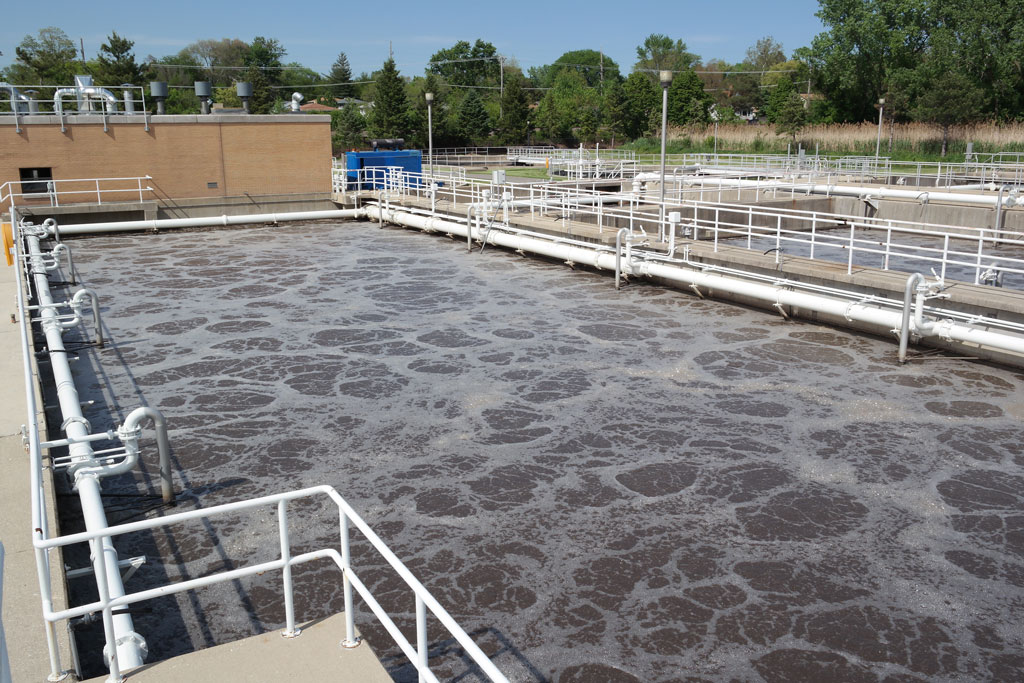Wastewater treatment using Aerotank treatment technology
At present, the demand of wastewater treatment of companies and enterprises is increasing due to the increasingly strict requirements of environmental governing bodies on the management of waste discharge of enterprises. In the field of wastewater treatment, there are many new technologies that are widely applied, especially Jokaso technology. Jokaso treats wastewater at sources used for the installation for villas, homes, apartment blocks or hotels, restaurants, factories. Jokaso simultaneously treats all wastewater sources from the bathhouse, factories, washing machines. However, each processing technology has its own advantages and disadvantages, so choosing the right technology for the production scale of an enterprise is a matter of top priority.
In the world, there are various advanced technology methods for processing such as BBR, AAO, UASB, etc., which apply a kind of traditional Aerotank technology.
Traditional Aerotank is an artificial aerobic biological treatment process where organic matters are easy to be biodegraded by microorganisms and then used by aerobic microorganisms as a nutrient for growth and develop. As a result, the microbial biomass is increasing and the pollutant concentration of wastewater decreases. The air in the Aerotank tank is enhanced by the use of surface aeration machine, air blower, etc. to provide continuous air.
.png)
Aerotank mechanism in wastewater treatment system
+ In aerobic activated sludge tank with organisms growing in suspended form, the decomposition occurs when wastewater is in contact with sludge under continuous aeration conditions. Aeration aims to provide sufficient amounts of oxygen continuously and maintain activated sludge in suspended state.
+ Microorganisms grow by doubling. The time it takes to double a cell is often called reproductive time, which can range from less than 20 minutes to daily.
+ Substrate conversion process. Oxidation and cell synthesis:
- Organic matter + O2 => CO2 + H2O + new cell + intermediate products
In a water environment, when biological oxidation process occurs, microorganisms that use dissolved oxygen (COD) are the oxygen amount needed to oxidize the chemical compounds in water, including inorganic and organic. The total amount of oxygen used for the above reactions is taken from dissolved oxygen in water (DO). Subsequently the denitrification and nitrification take place.
Organic compounds contain NH4 +, microbial cell biomass, living cells and dead cells go out in the mud. Because of the enzymatic hydrolysis of bacteria and the denitrification assimilation process generating NO3, NO2, and O2 gas which will escape into the air. In order to smooth the processes in Aerotank, a complete stirring is required to compress and aerate pure oxygen
Aerotank tanks are divided into many categories such as traditional Aerotank, multi-stage Aerotank, etc. However, traditional Aerotank tanks are the most simple to use because its advantages are easy to build and operate, low cost, high efficiency and easy to apply in most manufacturing facilities.

Principles of Aerotank operations in wastewater treatment system
Aerotank is the oldest and most used technology because of its efficiency brought to enterprises. It is essentially an artificial aerobic process. Degradable organic matters will be used by aerobic microorganisms as nutrients for growth and development.
Thanks to that process, the amount of microorganisms in the tank is more and more increasing and the pollutant concentration in wastewater will decrease significantly. The amount of air in the tank is enhanced by surface aerators and air blowers.
The most outstanding feature of Aerotank tank is its extremely simple operation and safety. It can remove Nitrogen in wastewater gas and its BOD treatment performance is up to 90%. Aerotank tank is suitable for a variety of wastewater sources, making it easy to increase capacity by up to 20% without changing volume of the treatment tank.
Why shouldyou choose Aerotank tank in wastewater treatment?
High processing efficiency.
Removal of organic matter
Minimization of odor
Large biochemical oxygen demand (BOD) removes pollution and provides a good flow of water.
Oxidation and nitrification are achieved.
Biological nitrification without adding chemicals.
Removal of biological phosphorus.
The aerobic treatment environment removes many of the germs contained in agricultural wastewater.
Stabilization of sludge.
Ability to remove ~ 97% suspended solids
The most widely used wastewater treatment process.
This is a process in Japan's Jokaso treatment standard, which is suitable for the construction of large capacity wastewater treatment systems (1000m3/day and night)..